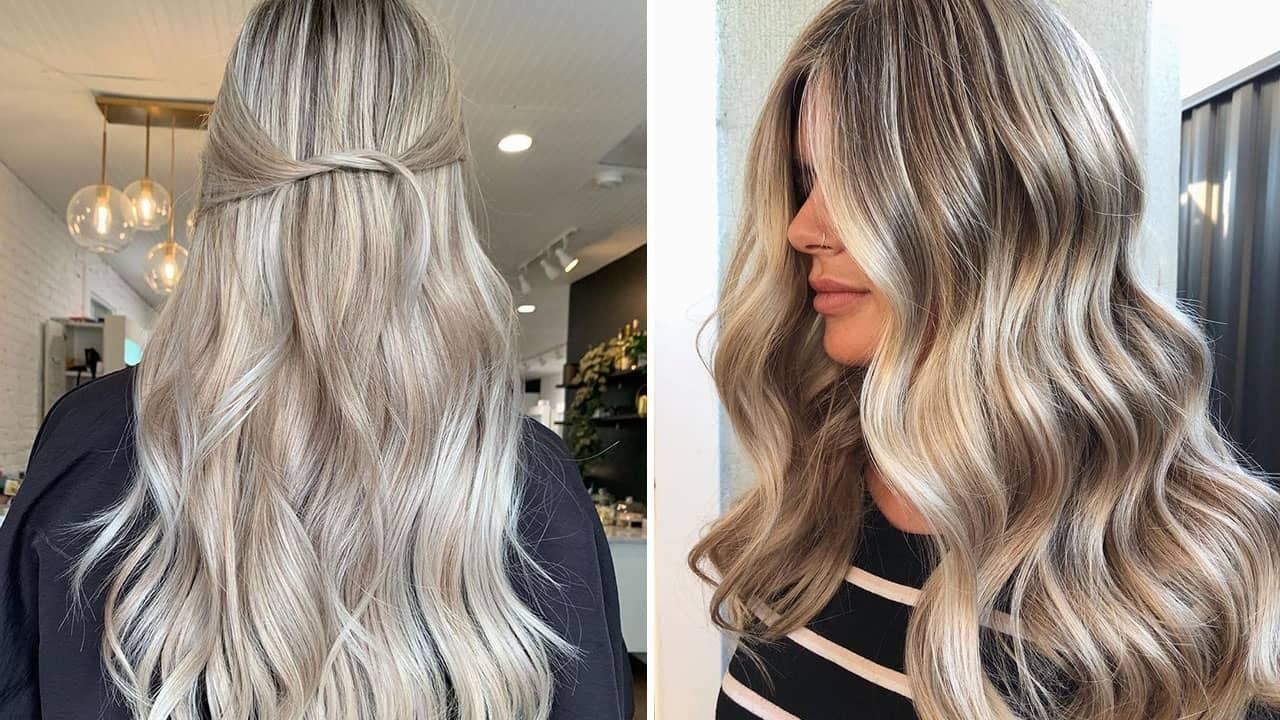Transitioning Your Gray Hair With Lowlights
 (1) (1).jpg)
From musician Phoebe Bridgers’ signature bleached-out, smoldering tresses to actress and cookbook author Tia Mowry embracing the silver streaks in her curls, gray hair—whether dyed or natural—is having a moment, and truly, it’s about time. Even if you’re going gray and embracing the change, though, that doesn’t mean your hair will transform into a uniform, flawless pearl-gray hue overnight. There’s a transition period involved, and like any different hairstyle you might attempt, it’s going to take some time to get acclimated to your new hue as you get there.
“Going gray isn’t always easy for people—gray hair will change skin complexion and change your personal style,” says Christopher Naselli, a celebrity cosmetologist and proprietor of Naselli & Co. salon who works with AGEbeautiful hair color. One thing that can make the transition a little less drastic though? Enter lowlights, a coloring technique that, particularly when coupled with highlights, can strategically merge and disguise grays without entirely concealing them.
“Lowlights are a great way to ease into the process,” says Naselli of going entirely gray. If you’re ready to start embracing the silver in your hair that’s starting to shine through—but aren't ready to go 100 percent natural—read on for more information on how to transition to gray hair with lowlights. You might be astonished by how low-maintenance this technique can be.
What are lowlights?
Think of lowlights as essentially the opposite of highlights but even lower-key in terms of what your hair has to go through to reach the desired end result. Where highlights lighten your base color before depositing livelier pigment (after your hair has typically been stripped of its color first), lowlights will deepen hair, and grays don’t need to be stripped to take that color, since they’re already stripped in their natural state.
“Lowlighting is a technique that involves darkening strands of hair using color that is usually the same level as your natural color or darker to create dimension and is a great solution for blending gray without the commitment of a single process color,” says Naselli. With lowlights, you’re only applying color onto some of your strands, utilizing a darker hue to create shadows that add additional dimension to your mane and can introduce the appearance of thickness. When paired up with highlights or babylights, grays tend to be camouflaged into the light meets dark blend.

Finding your finest lowlight coloration complement isn’t all that difficult. “When looking for the right tone, just match your natural level to the lowlight,” says Naselli. “You don’t want to choose a tone that’s much darker than your natural base color because you don’t want to create too much contrast when adding lowlights. You want to create a gentler, more natural blend.” Of course, your skin tone will also inform how warm or cold the lowlights should be, so keep that in mind as well when focusing in on a hue.
One thing to note: Lowlights typically are a superior gray-blending strategy for blonde to medium brown hues. Very dark hair can be more difficult to integrate with highlights and lowlights and may fair better with complete coverage through a single process dye treatment, depending on how much gray is present. Chat things through with your stylist to see what your options are.
What do lowlights appear like on gray hair?
According to Guy Tang, celebrity cosmetologist and proprietor of #Mydentity, lowlights typically appear like darker strands of hair that are strategically distributed throughout the scalp to break up your grays and any highlights, if you have them. “Don’t go too dark,” Tang advises. This look is really about subtlety. He suggests a demi-permanent formula where practicable, and semi-permanent dyes are an option, too.
Why might someone get lowlights when they start going gray?
Lowlights can be a wonderful halt on the way to an all-over gray style or a technique to minimize your silver strands if you’re still devoted to the hair color you’ve maybe had your whole life and aren’t ready to completely abandon it just yet. If this technique is something you’re contemplating, Naselli suggests consulting with your stylist. “Be clear on your style and color goals; you might not be ready for the full commitment of letting your hair naturally grow out and committing to a full head of gray hair,” he says. “Lowlighting is the best way to start the process or even just blend away some of the gray that you currently have.”

Lowlights tend to be lower maintenance than highlights and grow out in a natural manner, which is ideal if you don’t want to continually be in the salon chair. They’re also much simpler to DIY, Naselli says, than highlights if you’re familiar with doing your own hair. Another advantage to lowlights is they can help to rectify the brassiness that growing-out grays can sometimes display. “Lowlights will also help fight against any unwanted yellow tones that can happen when you have gray coming through,” says Naselli. You may alos read this: 16 Stunning Light Brown Hair Color Ideas
How should lowlights be maintained at home?
Once you’ve accomplished your ideal lowlight style, certain at-home strategies will keep your strands looking their freshest in between salon visits. First and foremost, it’s a good idea to cleanse and condition with something that’s specially formulated for color-treated hair.
“The best way to maintain lowlights is by using the right products that ensure hydration and smooth, shiny hair,” says Tang. He recommends an emollient, fortifying formula, such as his own MyHero Shampoo and Conditioner, to reduce breakage. “It has hyaluronic acid, which is beneficial for color-treated hair to retain a proper balance of lipids and proteins for healthy-looking hair,” he explains. You can fight any undesirable discoloration or brassiness by cycling a mild purple shampoo into your hygiene routine.
